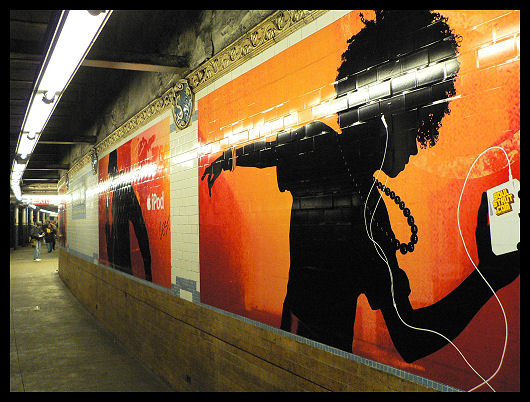 The politicking surrounding the threatened cuts to the MTA’s student MetroCard program were in full swing yesterday as MTA CEO and Chairman Jay Walder made an appearance before Richard Brodsky’s Assembly Committee on Corporations, Authorities and Commissions. While Walder spoke about his aversion toward using stimulus funds to cover the MTA’s operating gap, Brodsky reassured the MTA head that he and the Assembly would work hard to find money for student rides.
The politicking surrounding the threatened cuts to the MTA’s student MetroCard program were in full swing yesterday as MTA CEO and Chairman Jay Walder made an appearance before Richard Brodsky’s Assembly Committee on Corporations, Authorities and Commissions. While Walder spoke about his aversion toward using stimulus funds to cover the MTA’s operating gap, Brodsky reassured the MTA head that he and the Assembly would work hard to find money for student rides.
“There is no reason in God’s Earth to make young kids pay the price of the MTA’s fiscal crisis,” Brodsky said. “I think parents should be hopeful if not confident that we’re going to solve this before next September.”
Of course, promises from Brodsky may not be enough. The MTA is threatening to end the student MetroCard program not because of the recent reduction in state subsidies from $45 million annually to just $6 million but because neither the state or city have upped their contributions to the program. At one point, as I’ve explained in the past, the city, state and MTA split the funding for student rides evenly with each body covering approximately a third of the costs. As school enrollment levels and the cost of free rides have increased, the state and city have never upped their contributions, and the MTA has been saddled with covering nearly $170 million of student rides per year.
“We’re going to deal with that in a timely way,” Brodsky said of the MTA’s threats to end free rides for the city’s students, “and we’re very confident there’s going to be a good outcome.” Brodsky, reports amNew York, said that he will be “pushing” to restore the state’s contributions to the student program.
Brodsky’s words, if we parse them, seem to indicate that, on the one hand, he will find a way to fund student travel but, on the other, he will “push” simply to restore the state’s $45 million grant, but the MTA needs more. The authority needs both New York City — as Christine Quinn noted earlier this week — and New York State to up its student subsidies significantly in order to safe the program.
The Metropolitan Transportation Authority is in the business of running a transit system. It isn’t in the business of providing free transportation for students because the city and state are too broke to do so and found a good scapegoat/transit out in the MTA’s largess. As Walder goes to Albany to lobby for money, he should make this reality quite clear to those who are listening.
Meanwhile, Brodsky noted that the state would not provide another funding plan — or in his words, a bailout — for the MTA. Every agency, he said, has to make “painful” cuts as funding is tight. Left unsaid is the quick fix for the city and the MTA. East River Bridge Tolls would solve many of the MTA’s current fiscal woes and would simply be good for New York City. Walder won’t lobby for those because to do so now would be political folly, but free bridges remain a reminder to the way state and city representatives view the MTA and our subways as second-rate transportation options when they are truly the economic drivers of the region.

 After spending the early part of this week highlighting politicians who do not seem to care enough about transit to educate themselves, we find ourselves faced with a high-ranking New York official who nearly gets it. Christine Quinn, speaker of the City Council, has engaged in a very public campaign to support the student MetroCard program and to speak out against the MTA’s proposed service cuts. She’s nearly on the right track with some of her words, but I am wary of fully supporting her plan.
After spending the early part of this week highlighting politicians who do not seem to care enough about transit to educate themselves, we find ourselves faced with a high-ranking New York official who nearly gets it. Christine Quinn, speaker of the City Council, has engaged in a very public campaign to support the student MetroCard program and to speak out against the MTA’s proposed service cuts. She’s nearly on the right track with some of her words, but I am wary of fully supporting her plan. City Council member Peter Vallone, Jr. (D) carries with him a familial legacy of New York politics. His grandfather was a judge in the Queens County Civil Court, and his father was the city’s first City Council speaker and a long-time representative from Astoria. When Senior stepped down in 2001, Junior took up the Vallone City Council seat mantle.
City Council member Peter Vallone, Jr. (D) carries with him a familial legacy of New York politics. His grandfather was a judge in the Queens County Civil Court, and his father was the city’s first City Council speaker and a long-time representative from Astoria. When Senior stepped down in 2001, Junior took up the Vallone City Council seat mantle.


 Let me take a minute to introduce you to Aileen Gunther. Ms. Gunther, pictured at right, is the Democratic Assembly representative from the 98th District. She represents parts of Orange and Sullivan Counties, and based on
Let me take a minute to introduce you to Aileen Gunther. Ms. Gunther, pictured at right, is the Democratic Assembly representative from the 98th District. She represents parts of Orange and Sullivan Counties, and based on